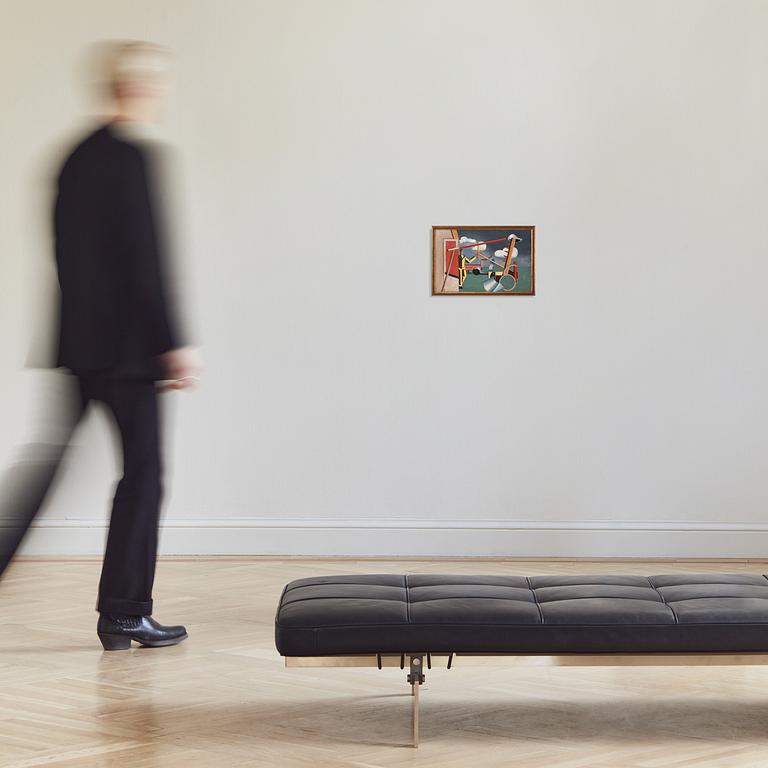Erik Olson
"Skördemaskin"
Signed Erik O and dated -26. Canvas laid on paper panel, 27,5 x 43 cm. Also painted verso.
Alkuperä - Provenienssi
Yngve and Martha Dillberg, acquired directly from the artist.
Thence by descent to the present owner.
Näyttelyt
Hallands museum, "Halmstadgruppen före Halmstadgruppen", sommarutställning 18 june - 27 August, 1967, cat. no. 73.
Kirjallisuus
”Konst i svenska hem”, vol. 2, listed p. 295 in
collection 453: ”Postmästare Yngve Dillberg, Stortorget 14, Ystad" as "Slåttermaskin".
Muut tiedot
In 1926, Erik Olson spent his time at home in his birth town of Halmstad. During the day, he worked at the drafting office of Värkstadbolaget, and in his free time, he devoted himself to his own artistic creations. This lifestyle was not something he wished for or chose for himself. Economic difficulties had led to his departure from the center of modern art in Paris. Despite growing up in a working-class home, Erik, along with his brother Axel, knew from an early age that he wanted to become an artist. In 1915, they formed the artist group Gnistan with their cousin Waldemar Lorentzon. A decisive event for the three young artists occurred in 1919 when they were noticed by engineer Egon Östlund at an amateur exhibition in Halmstad. Östlund introduced them to his protégé Gösta Adrian-Nilsson (GAN), an internationally established artist who would show them the way to European avant-gardism. GAN also became their ticket to Fernand Léger's Académie Moderne in Paris, where Erik Olson and Waldemar Lorentzon traveled to in the early 1924. They managed to rent an apartment at 86 rue Notre-Dame-des-Champs, where they were neighbors with both GAN and the couple Hjertén-Grünewald. Léger's academy was located on the ground floor. Under the time at Léger, Erik and Waldemar also met Otto G. Carlsund, who introduced them to Parisian nightlife and places where the avant-garde of the time met. Despite living on the brink of ruin, Olson not only apprenticed with the master Léger but also took every opportunity to go on study trips throughout Europe, where he was fascinated by everything from Giotto to Kandinsky. In October 1924, an exhibition was held at Maison Watteau in Paris featuring Léger and his Scandinavian students, Otto G. Carlsund, Franciska Clausen, Waldemar Lorentzon, and Erik Olson. However, Erik was eventually forced to leave France with a heavy heart in early 1925. It was during the upcoming period in Halmstad that the painting ”Skördemaskin”/ ”Slåttermaskin” was created. Erik was still strongly influenced by Léger but also found new paths. It was during these years that some of his most elegant compositions were created. In the current catalog number, we find a worker dressed in yellow standing next to his modern machine. The skillfully arranged colors contrast and provide perspective to the composition, despite its planned nature. With an exciting depth effect between the hard and flat geometric shapes and the soft, undulating and more organic ones, the factory in the background emerges.





















































